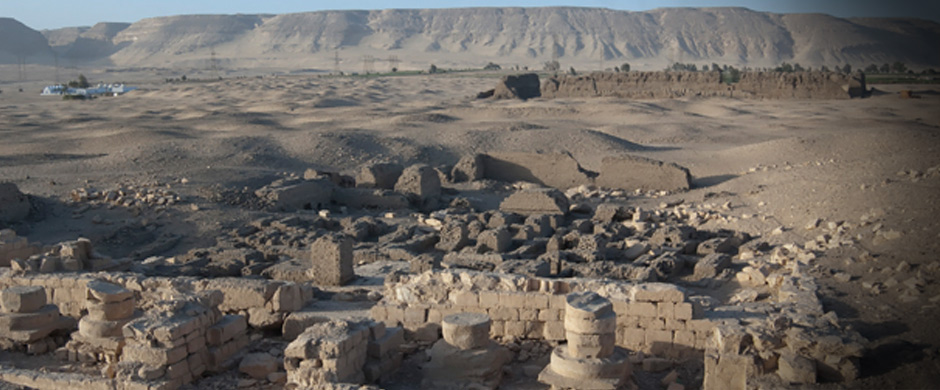 | In the Field
| In the Field

Current IFA Projects at Abydos
Archaeology and the Festival of Osiris
As the primary cult place of the god Osiris, ruler of the land of the dead and one of the most important and popular Egyptian deities, Abydos had a special importance in Egyptian religious belief and practice. A central component of the cult of Osiris was a great annual festival procession that followed a route from the god’s temple in the town, across the low desert landscape, to the site of the early royal tombs at Umm el-Qa’ab, where one of the tombs was interpreted to be that of the god, who, according to myth, had once been an earthly ruler of Egypt. A frequently expressed wish in religious texts from ancient Egypt is to be able to visit the site to witness this procession and benefit from its rituals. A pilgrimage to Abydos for just this purpose is frequently depicted in Egyptian funerary art.
Excavations on the desert edge overlooking the ancient town and temple of Osiris revealed the existence of an extensive zone filled with mudbrick chapels built for private individuals. The chapels, which had no associated tombs, are identical to those encountered in the nearby cemeteries and were, like them, built to house stelae and statues. These chapels were constructed to allow their owners, through their stelae and statues, to witness symbolically and benefit from the great festival procession that passed directly in front of them on its way to the tomb of Osiris. The range in size and complexity of the chapels speaks to the involvement of many levels of society in the ritual life of Abydos. The discovery and exploration of the votive chapels at Abydos has shed light on a previously poorly understood aspect of religious practice in ancient Egypt and underscores the importance of the site in Egyptian religious belief.
The results of the chapels excavations, undertaken some years ago by Professor David O'Connor, are currently being prepared for publication.